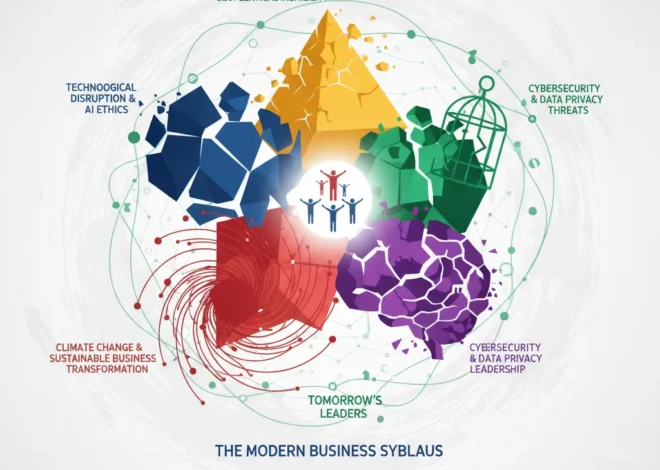
The $1 Meal Economy: Why China’s Youth Are Ditching Luxury for Frugality, and What It Means for Global Investors
In bustling Chinese cities, a surprising trend is taking hold among the nation’s youth. Once the engine of global luxury sales and aspirational consumerism, a growing number of young people are now flocking to community canteens, meticulously planning budgets to secure two meals for as little as $1. This isn’t a niche phenomenon; it’s a powerful symbol of a seismic shift in the economic and psychological landscape of China’s Gen Z.
For years, the narrative surrounding China’s economy was one of unstoppable growth, fueled by a generation of optimistic, high-spending consumers. They were the “moonlight clan” (月光族), happy to spend their entire monthly paycheck on the latest gadgets, fashion, and experiences. Today, that narrative is being rewritten. Faced with a potent cocktail of economic uncertainty, a precarious job market, and a deep-seated anxiety about the future, this generation is trading consumer confidence for cautious frugality.
This article delves into the forces driving this profound change in consumer behavior. We will explore the structural cracks in China’s economy, analyze the new spending habits that are emerging, and, most importantly, unpack the far-reaching implications for global finance, investing strategies, and international brands that have long bet on the Chinese consumer.
From ‘Moonlight Clan’ to ‘Miser Mode’: Deconstructing the Economic Anxiety
To understand the current trend, one must first appreciate the magnitude of the change. The previous decade saw an explosion in consumer credit and the rise of powerful e-commerce and financial technology platforms that made spending easier than ever. This fueled a culture of aspirational consumption. However, the foundations supporting this optimism have begun to crumble, replaced by a pervasive sense of economic insecurity.
Several key factors are contributing to this generational pivot:
- Record Youth Unemployment: The most significant driver is a bleak job market. In mid-2023, the urban youth unemployment rate for ages 16-24 soared to a record high of over 21% (source) before officials paused the release of the data. While recent figures show a slight improvement after methodology changes, the reality for millions of graduates is a hyper-competitive landscape where stable, well-paying jobs are increasingly scarce. This “graduation equals unemployment” fear is a powerful deterrent to discretionary spending.
- The Property Market Crisis: For decades, real estate was the primary vehicle for wealth creation and a cornerstone of the Chinese economy. The ongoing crisis, exemplified by the struggles of giants like Evergrande and Country Garden, has shaken public confidence. With property values falling and many projects left unfinished, the sense of a guaranteed path to prosperity has evaporated, impacting household wealth and the willingness to spend.
- The Scars of “Zero-COVID”: Years of sudden lockdowns, business closures, and income instability have left deep psychological scars. The experience taught a harsh lesson in financial fragility, pushing many to prioritize saving for emergencies over indulging in non-essential purchases. This has fundamentally altered the risk calculus for an entire generation.
These macroeconomic headwinds are not just abstract data points; they translate into tangible anxiety about the future, forcing a radical re-evaluation of personal finance and life goals.
The EU's New Global Rulebook: A Bold Move for Sustainability or a Dangerous Overreach?
The New Frugality: A Glimpse into Modern Chinese Consumerism
The pivot to frugality is manifesting in creative and digitally-savvy ways. Young consumers are not just cutting back; they are actively seeking value and sharing their strategies across social media platforms like Xiaohongshu and Douyin. This has given rise to a new “frugality economy.”
Below is a comparison of traditional spending patterns versus the emerging trends we see today, a clear indicator of the changing priorities impacting the broader economics of consumption.
| Spending Category | “Old” Consumer Behavior (Pre-2020) | “New” Frugal Behavior (Present) |
|---|---|---|
| Dining | Trendy restaurants, milk tea, international chains. | Community canteens, home cooking, group buying for discounts. |
| Fashion & Luxury | International fast fashion and luxury brands. | Second-hand clothing apps, domestic brands, “unbranded” basics. |
| Technology | Annual smartphone upgrades, latest gadgets. | Extending device lifecycles, buying refurbished electronics. |
| Financial Tools | Easy credit via fintech apps (e.g., Ant’s Huabei). | Intense budgeting with financial technology apps, saving challenges. |
| Travel & Leisure | International tourism, luxury hotels. | Domestic “special forces” travel (intense, low-budget trips), local experiences. |
This new consumer landscape is heavily influenced by technology. While the previous wave of fintech innovation focused on facilitating credit and spending, the current wave is about control and savings. Budgeting apps, price comparison tools, and second-hand e-commerce platforms are booming. This demonstrates a market adapting to a new set of consumer demands, where financial technology is a tool for preservation rather than consumption.
Beyond the Ballot Box: How Off-Year Elections Signal Major Shifts for the Economy and Your Portfolio
The Ripple Effect: Global Implications for the Stock Market and Investment Strategy
The cautiousness of China’s youth is not a localized issue. It has profound and immediate implications for the global economy and for anyone involved in international investing and finance.
First, it poses a direct challenge to China’s economic model. Beijing has been trying to pivot from an investment-led to a consumption-led growth model. If the most significant consumer demographic pulls back, this transition becomes significantly harder, potentially leading to slower GDP growth and deflationary pressures. According to one economist, this thriftiness is a “nightmare” for Chinese policymakers (source).
For international investors and corporations, the stakes are enormous. Companies that have built their growth strategies around the Chinese consumer are now facing a reckoning:
- Luxury Brands: Giants like LVMH, Kering, and Richemont, for whom Greater China represents a massive portion of revenue, are particularly vulnerable. The decline in aspirational buying directly impacts their bottom line and their valuations on the stock market.
- Consumer Tech: Apple’s recent struggles in China, facing competition from domestic players like Huawei and a population less willing to pay a premium for the latest iPhone, highlight this trend.
- Global Chains: Brands like Starbucks, once a status symbol, now compete with a proliferation of cheaper domestic coffee chains, forcing them to rethink their pricing and value proposition.
However, this shift also creates new opportunities. Businesses that cater to the demand for value, durability, and cost-effectiveness may thrive. Discount retailers, second-hand platforms, and companies offering at-home entertainment and DIY solutions could find a receptive audience. Investors must now look beyond premium brands and identify the companies poised to win in this new era of Chinese consumerism.
The Road Ahead: Policy, Technology, and the Future of Spending
The Chinese government is acutely aware of this challenge. We can expect continued efforts to stimulate the economy, from interest rate cuts managed by the central banking system to potential subsidies aimed at encouraging purchases of big-ticket items like cars and appliances. The primary focus, however, will be on stabilizing the job market and restoring confidence, which is a long-term endeavor.
Technology will continue to play a dual role. While some platforms may be used to encourage spending through targeted promotions, the underlying trend of using fintech for disciplined saving is likely to persist. The transparency and security offered by emerging technologies like blockchain could eventually find a use case in building trust in second-hand markets or ensuring the provenance of discount goods, though this remains a nascent application.
The core question for anyone involved in global economics and trading is whether this is a temporary, cyclical downturn or a permanent, structural change. All signs point to the latter. The combination of demographic pressures (the “4-2-1” family structure), economic scarring, and a cultural shift away from materialism suggests a fundamental reset.
Beyond the Ballot Box: How State Elections Shape Investment Strategy and the National Economy
In conclusion, the image of a young person in Shanghai or Beijing choosing a $1 canteen meal over a Starbucks latte is more than just a money-saving hack. It is a data point representing a massive recalibration of the world’s second-largest economy. It signals the end of an era of thoughtless consumption and the dawn of a more cautious, value-driven consumer. For global investors, business leaders, and financial professionals, ignoring this profound shift is not an option. The future of the global economy may well be decided not in boardrooms or trading floors, but in the humble community canteens of China.


